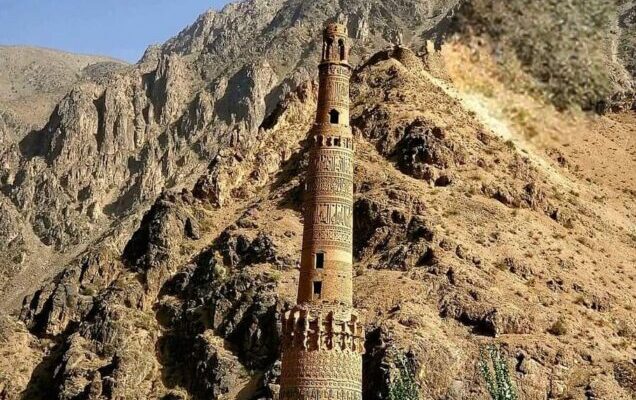Pyramid-shaped structures have been a fascinating and mysterious subject of study for researchers across the world. Found in various prehistoric civilizations, these remarkable architectural achievements have led some to believe in conspiracy theories about a lost antediluvian civilization. However, anthropological evidence and cultural analysis have provided more grounded explanations for the construction of these structures. This article will explore the different purposes of pyramid-shaped buildings in various cultures, emphasizing that their prevalence in early civilizations is a result of natural human development and not the remnants of a lost civilization.
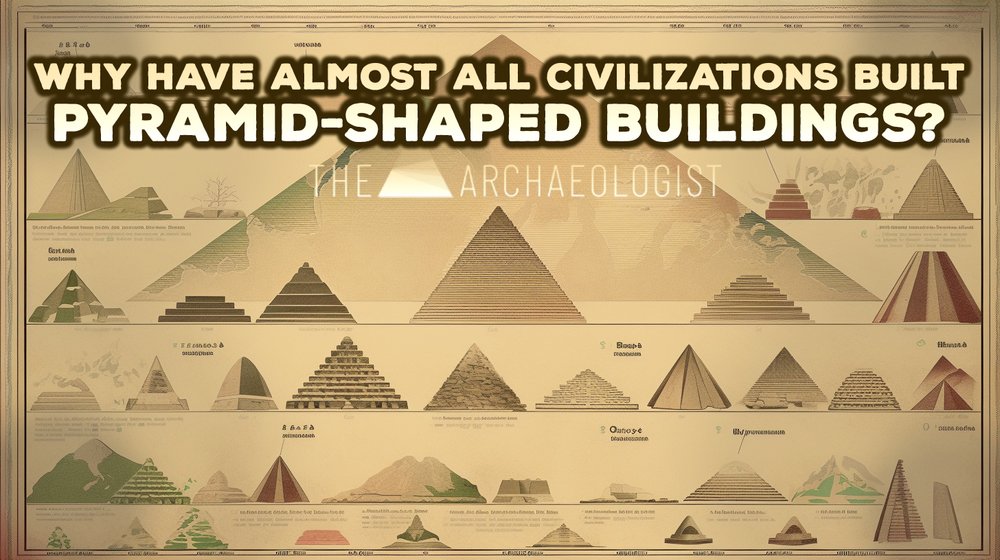
EGYPT: THE CLASSIC PYRAMIDS
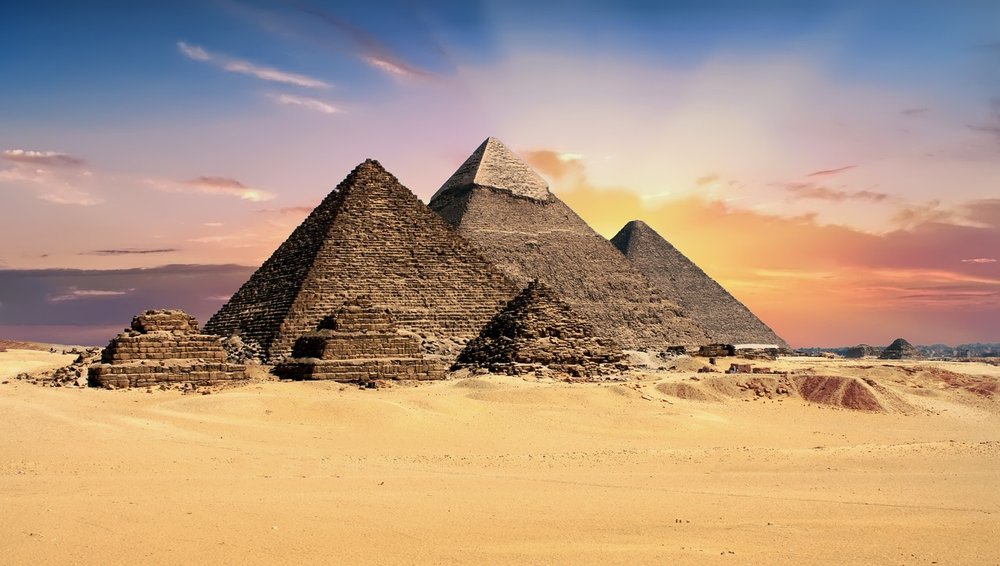
Arguably the most famous pyramids, the Egyptian pyramids served as tombs for pharaohs and their queens. These monumental structures were an essential part of the ancient Egyptians’ belief in the afterlife. They believed that the pharaohs’ souls would journey to the sky, where they would join the gods. Pyramids were designed to ensure the eternal existence of the pharaohs and provide them with everything needed for their journey, including food, clothing, and treasures.
The techniques employed to build Egyptian pyramids evolved over time. Early pyramids, such as the Step Pyramid of Djoser, utilized a step-like structure built from layers of stone called mastabas. Later pyramids, like the Great Pyramid of Giza, featured a true pyramid shape with smooth, angled sides. The construction process involved quarrying large limestone blocks, which were then transported and assembled on site using ramps, levers, and rollers.
“Some Egyptian pyramids contain inscriptions known as the “Pyramid Texts,” which are among the oldest religious texts in the world. These texts consist of spells, prayers, and rituals that were intended to aid the deceased pharaohs in their journey to the afterlife.
MESOPOTAMIA: ZIGGURATS AS TEMPLES
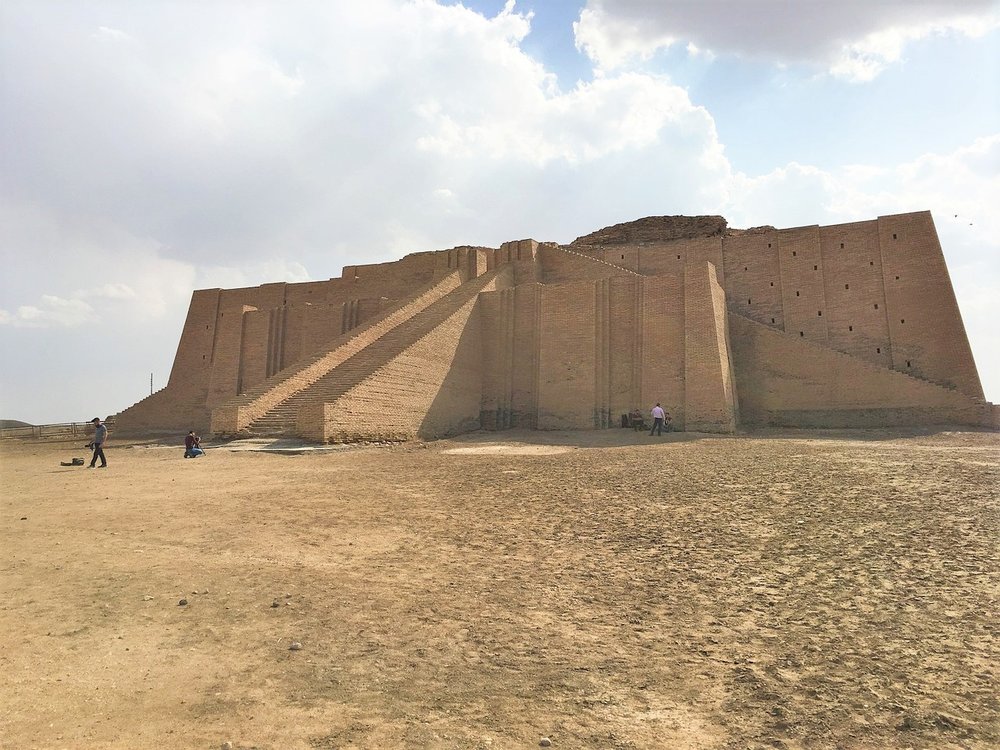
Ziggurats, the pyramid-like structures found in ancient Mesopotamia, were primarily religious in nature. These impressive stepped platforms were built to support temples dedicated to various gods and goddesses. Ziggurats were seen as the physical representation of the connection between the heavens and earth, with their high terraces providing a space for priests to communicate with the gods.
Ziggurats were constructed using mud bricks, which were often faced with more durable fired bricks. These structures were characterized by a series of stepped platforms or terraces, with each level becoming progressively smaller as they ascended. The top platform typically had a temple or shrine dedicated to a specific deity.
Ziggurats were considered to be the dwelling places of the gods, and they served as a bridge between the earthly realm and the divine. Priests and priestesses performed religious rituals, ceremonies, and offerings on the top platform, which was believed to be the abode of the patron deity of the city. The ziggurat was often the center of a larger temple complex, with additional temples, courtyards, and administrative buildings surrounding the structure.
Ziggurats were often situated at the heart of Mesopotamian cities, serving as the focal point of the urban landscape. They were a symbol of the city’s power and prosperity, as well as its connection to the divine. The construction of a ziggurat was a major undertaking that required significant resources and labor, which further demonstrated the city’s wealth and influence.
MESOAMERICA: CEREMONIAL AND ASTRONOMICAL PURPOSES

The ancient Maya, Aztec, and other Mesoamerican cultures built pyramid-shaped structures with varying functions. Some pyramids were used for religious ceremonies and sacrificial rituals, while others had astronomical purposes. Many Mesoamerican pyramids were precisely aligned with celestial events, such as solstices and equinoxes, allowing the people to track time and agricultural cycles.
Mesoamerican pyramids were generally built with stepped sides and a flat platform on top, where temples or other structures were often located. These pyramids were typically constructed using a combination of stone, mortar, and stucco, with intricate carvings and sculptures adorning the exteriors. The architectural styles varied across different cultures and time periods, resulting in a diverse range of pyramid structures throughout the region.
They served as the central axis of sacred precincts and were the focus of religious activities, such as rituals, dances, and sacrifices. The pyramids were dedicated to various gods and goddesses, with the temples on top of the pyramids functioning as places for worship and offerings.
Many Mesoamerican pyramids were built with precise alignments to celestial events. This astronomical knowledge was crucial for these civilizations, as it allowed them to track time, create accurate calendars, and plan agricultural cycles. Notable examples of astronomically aligned pyramids include the Pyramid of Kukulcan at Chichen Itza, which is aligned to the spring and autumn equinoxes, and the Pyramid of the Sun at Teotihuacan, which is aligned with the Pleiades star cluster.
NORTH AMERICA: MOUND BUILDERS’ MONUMENTS
In North America, indigenous cultures such as the ancient Hopewell and Mississippian peoples constructed pyramid-like earthen mounds. These mounds were built between roughly 3400 BCE and 1500 CE, and they served a range of functions, including religious, ceremonial, and burial purposes. The construction of these mounds reflects the complex social organization and religious practices of these cultures.
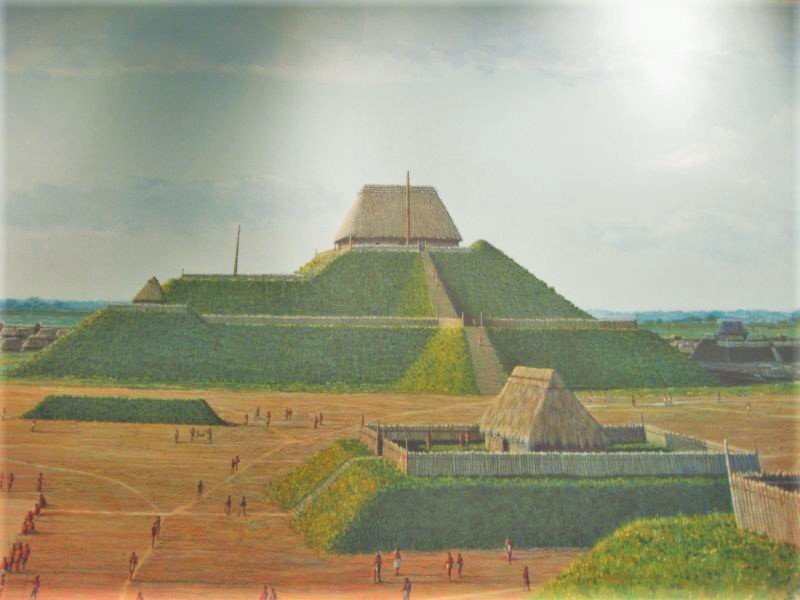
The Mound Builders constructed various types of mounds, including conical mounds, which were usually used as burial sites; platform mounds, which supported temples or other structures; effigy mounds, which were shaped like animals or other symbols; and geometric mounds, which were constructed in regular shapes like circles, squares, and octagons.
The mounds were made from layers of earth, clay, and sometimes stone, and they were typically built over a period of years or even centuries. The Mound Builders used simple tools, such as digging sticks and baskets, to gather and transport the materials needed for mound construction.
The mounds held significant cultural and religious importance for the Mound Builders. They served as the centers of spiritual life and were often the sites of ceremonies and rituals. Some mounds contained burials, with the deceased interred alongside valuable artifacts, indicating a belief in an afterlife.
SOUTHEAST ASIA: CAMBODIAN AND INDONESIAN PYRAMIDS

The pyramids and pyramid-like structures in Cambodia and Indonesia are remarkable examples of ancient architecture in Southeast Asia. While these structures are not pyramids in the strictest sense, they share some similarities with pyramids found in other parts of the world.
The ancient Khmer Empire built temple pyramids as part of their religious architecture. The most famous example is Angkor Wat in Cambodia, a colossal temple complex built in the 12th century. These structures served as temples dedicated to Hindu gods and later became Buddhist religious sites. Similarly, in Indonesia, the Borobudur temple, built during the 8th and 9th centuries, is a step pyramid that served as a massive Buddhist monument.
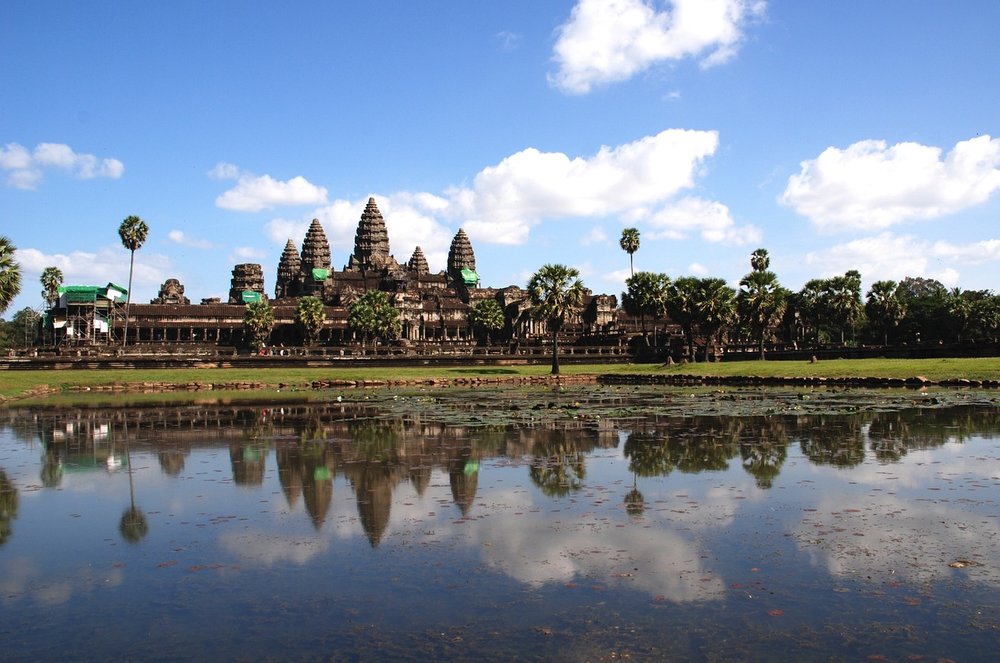
Angkor Wat is an architectural marvel with a unique combination of temple-mountain and galleried temple styles. It is surrounded by a moat and an outer wall, enclosing a vast space filled with galleries, towers, and courtyards. The central sanctuary, which resembles a stepped pyramid, is adorned with intricate carvings and bas-reliefs depicting Hindu mythology, as well as scenes from daily life during the Khmer Empire.
Borobudur is a unique architectural creation with a combination of a stepped pyramid and a mandala, symbolizing Buddhist cosmology. The monument consists of nine stacked platforms, with the lower six being square and the upper three being circular. The entire structure is adorned with intricate stone carvings and over 500 Buddha statues. The monument is also known for its 2,672 relief panels that depict the life of the Buddha, the teachings of Buddhism, and the journey to enlightenment.

Another significant pyramid-shaped structure is found in Koh Ker, an ancient temple complex situated in the Preah Vihear province of modern-day Cambodia, approximately 120 kilometers (75 miles) northeast of Angkor. The site served as the capital of the Khmer Empire from 928 to 944 CE under the reign of King Jayavarman IV and his successor, Harshavarman II. While the Koh Ker complex features over 180 monuments and sanctuaries, the most notable structure is Prasat Thom, a unique pyramid-like temple.
Prasat Thom is a 36-meter (118-feet) high, seven-tiered pyramid-shaped temple-mountain that stands at the heart of the Koh Ker complex. The temple is built of sandstone and laterite and has a striking resemblance to the pyramidal structures found in Mesoamerica. The stepped pyramid of Prasat Thom consists of a series of platforms leading to a central sanctuary at the summit. The lower terraces are supported by laterite walls, and the sanctuary on top was constructed using sandstone.
Prasat Thom was dedicated to the Hindu god Shiva, and it served as a royal temple during the reign of King Jayavarman IV. The temple’s design reflects the concept of the temple-mountain, symbolizing Mount Meru, the sacred mountain in Hindu cosmology that represents the center of the universe.
AFRICA: NUBIAN AND NIGERIAN PYRAMIDS

In Africa, the Nubian pyramids of Sudan were constructed as tombs for the kings and queens of the ancient Kushite kingdoms. These pyramids, although smaller and steeper than their Egyptian counterparts, served a similar purpose, reflecting the Nubians’ belief in the afterlife. In Nigeria, the ancient Yoruba people built earthwork pyramids known as Ile-Ife. These structures were most likely used for religious ceremonies and royal burials, highlighting the cultural and spiritual significance of pyramids in this region.
Nubian pyramids are generally smaller than the Egyptian pyramids, with the largest Nubian pyramids standing at around 30 meters (98 feet) in height, compared to the Great Pyramid of Giza, which stands at 146 meters (480 feet). Nubian pyramids are characterized by their steep slopes, with angles ranging between 60 to 70 degrees, which give them a more pointed appearance than the Egyptian pyramids.
Like the Egyptian pyramids, the Nubian pyramids were constructed using large sandstone or granite blocks. The stones were generally left unpolished, and the gaps between the blocks were filled with loose rubble or sand. The pyramids were often built on top of a burial chamber, which was cut directly into the bedrock or built above ground.
Nubian pyramids primarily served as tombs for the royalty and elite members of the Nubian Kingdoms. Unlike the Egyptian pyramids, which were built as standalone monuments, the Nubian pyramids were typically surrounded by a funerary complex that included a chapel, a courtyard, and other structures for conducting burial rituals and ceremonies.
There are over 200 known Nubian pyramids, which is more than the number of pyramids in Egypt. The majority of these pyramids are located in the Meroë region, which served as the capital of the Kingdom of Kush during its later stages.
CHINESE PYRAMIDS: ENIGMATIC TOMBS AND BURIAL MOUNDS
In China, pyramid-like structures have also been discovered, further adding to the global prevalence of this architectural form. Known as the “Chinese pyramids,” these structures are primarily found in the central plains region, particularly in Shaanxi and Henan provinces. Although they bear similarities to the earthen mounds found in North America, these Chinese pyramids are generally larger and more complex in design.
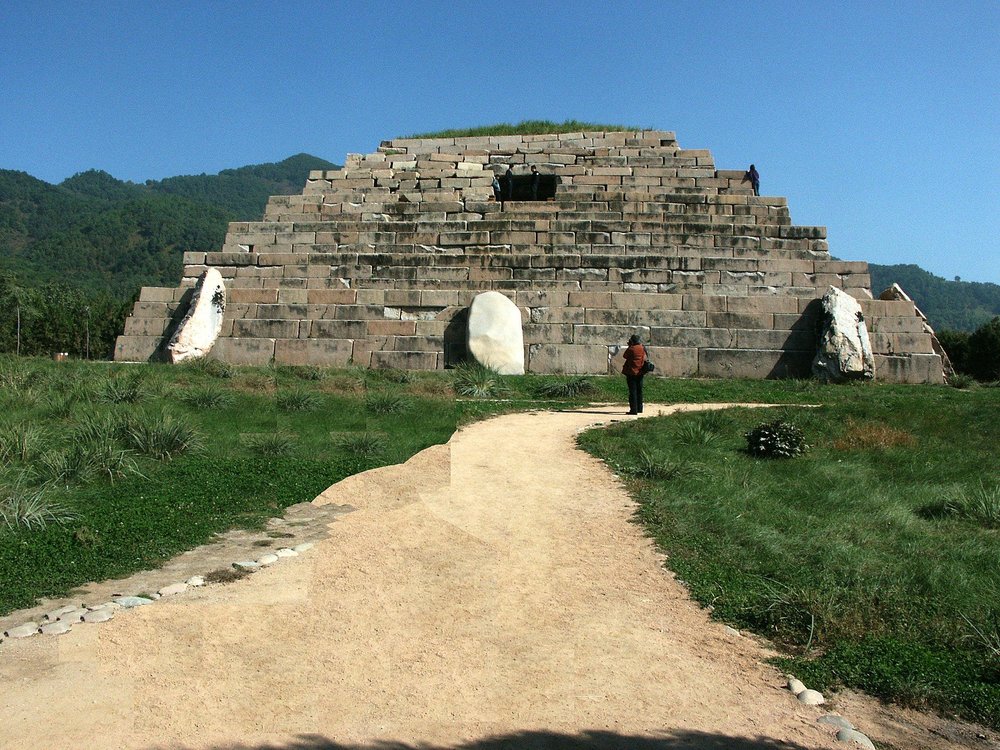
Most of the Chinese pyramids are believed to be royal tombs from the Han Dynasty (206 BC–220 AD) and later dynasties. The most famous example is the tomb of Emperor Qin Shi Huang, the first emperor of unified China. His mausoleum, known as the Qin Mausoleum, is a vast underground complex with a pyramid-shaped mound above it. The site is also famous for the Terracotta Army, a collection of thousands of life-sized terracotta soldiers, horses, and chariots, that were buried with the emperor to protect him in the afterlife.
Another notable Chinese pyramid is the tomb of Emperor Wu of the Han Dynasty, located at the Maoling Mausoleum. This large earthen mound, which once had a stepped design similar to Mesoamerican pyramids, served as a symbol of the emperor’s power and authority. The construction of these tombs showcases the technological and artistic achievements of ancient Chinese civilization, as well as their beliefs in the afterlife.
COMMON ANTHROPOLOGICAL EXPLANATIONS
The widespread construction of pyramid-shaped structures in early civilizations can be explained by several anthropological factors. First, the shape of a pyramid provides structural stability, making it an ideal design for large-scale buildings. Additionally, the construction of monumental structures was a way for ancient societies to demonstrate their power, wealth, and technological prowess.
Moreover, the human fascination with the heavens and the afterlife is a universal theme across cultures. Pyramids, with their imposing height and connection to the divine, became symbolic representations of this fascination. It is essential to recognize that these shared themes are a result of parallel human development rather than evidence of a single, ancient civilization’s influence.
Pyramid-shaped structures symbolize a range of meanings across different cultures. In many cases, they represent the connection between the earthly realm and the divine or celestial spheres. The shape of a pyramid, which narrows as it rises towards the sky, could be seen as a metaphor for the ascent of the soul or the bridging of the gap between the human and the divine. This symbolism is reflected in the various functions of pyramids, from tombs to temples, and demonstrates the importance of spiritual beliefs in early civilizations.

While it is true that some early civilizations had contact with one another, the architectural similarities between their pyramid-shaped structures can be attributed to the cultural exchange that occurred through trade, migration, and the spread of ideas. This process of cultural diffusion allowed various civilizations to adopt and adapt the concept of pyramid-building to fit their specific needs and beliefs.
For instance, the Nubian pyramids were influenced by their close proximity to Egypt, while the Mesoamerican pyramids show some similarities with the ziggurats of Mesopotamia. However, these connections are not indicative of a single, global antediluvian civilization but rather reflect the natural exchange of ideas and technology among distinct cultures.
DEBUNKING THE ANTEDILUVIAN MYTH: UNRAVELING THE TRUTH BEHIND PYRAMID CONSTRUCTION IN EARLY CIVILIZATIONS
Theories about a lost antediluvian civilization providing specific architecture and technology to early known civilizations are flawed for several reasons. While these theories may appear intriguing and mysterious, they lack scientific and historical evidence. Here are some reasons why such theories are incorrect:

- Independent Development: Numerous civilizations around the world developed pyramid-like structures independently, as a natural outcome of human ingenuity and cultural evolution. These structures often served different purposes, reflecting the unique beliefs and customs of each civilization. The similarities in architectural forms can be attributed to the human fascination with the heavens and the afterlife, as well as the structural stability that the pyramid shape provides.
- Cultural Diffusion: Cultural exchange through trade, migration, and the spread of ideas allowed various civilizations to adopt and adapt the concept of pyramid-building to fit their specific needs and beliefs. This process of cultural diffusion is a normal part of human history and does not require the existence of a lost antediluvian civilization to explain the similarities between pyramid structures.
- Lack of Concrete Evidence: There is no concrete archaeological or historical evidence to support the existence of a single, global antediluvian civilization that influenced the construction of pyramids worldwide. The artifacts, writings, and architectural remains discovered by archaeologists can be clearly linked to the known civilizations, and there is no compelling evidence that suggests the involvement of an unknown, advanced civilization.
- Advances in Archaeological and Anthropological Research: Modern archaeological and anthropological research has provided a wealth of information about the societies that built these pyramid structures. This research has helped us understand the complex social, economic, and political systems that drove the construction of these monumental buildings. As our understanding of these ancient civilizations improves, the need for a lost antediluvian civilization to explain the similarities between their architectural forms diminishes.
- Pseudoscience and Sensationalism: Theories about a lost antediluvian civilization often rely on pseudoscience and sensationalism rather than rigorous, evidence-based research. They tend to cherry-pick data, ignore contradictory evidence, and promote unfounded claims to support their narrative. Such theories are appealing because they offer a sense of mystery and wonder, but they lack the robust, empirical foundation required for serious academic consideration.
CONCLUSION
The construction of pyramid-shaped structures in prehistoric civilizations can be attributed to cultural and anthropological factors rather than conspiracy theories about a lost antediluvian civilization. Each culture built these structures for different purposes, reflecting their unique beliefs, customs, and technological advancements. By appreciating the diverse functions and significance of these ancient pyramids, we can better understand the complex societies that created them and resist the allure of unfounded conspiracy theories.
The construction of pyramid-shaped structures in various prehistoric civilizations is a fascinating subject that highlights the shared human experience. Despite different cultural contexts, these ancient societies independently developed similar architectural forms to express their spiritual beliefs, demonstrate their power, and create a lasting legacy. By examining these structures through an anthropological lens, we can appreciate their cultural significance and debunk conspiracy theories about a lost antediluvian civilization. Instead, we gain a deeper understanding of the diverse and remarkable achievements of our human ancestors.
